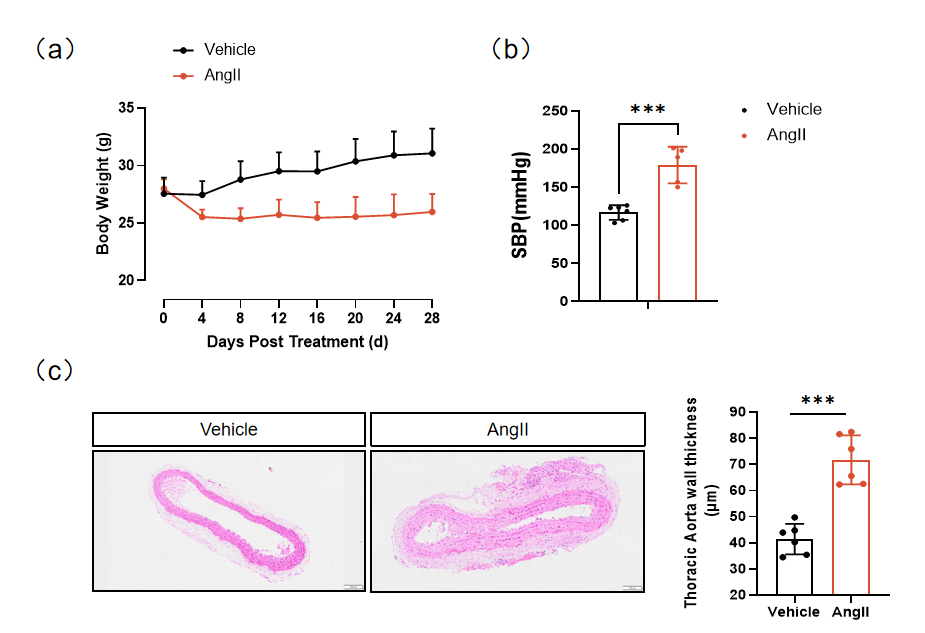Hypertension is a cardiovascular syndrome characterized primarily by elevated systemic arterial pressure, classified into primary hypertension and secondary hypertension. Primary hypertension accounts for over 90% of cases, with its etiology remaining unclear and associated with multifactorial interactions including genetic and environmental factors (e.g., high-salt diet, obesity, and stress). Secondary hypertension is caused by specific underlying diseases. The pathogenesis involves abnormalities in neural regulation, renal dysfunction, and vascular structural changes. Epidemiological studies indicate that the prevalence of hypertension increases with age, with a global prevalence rate of approximately 30%-40%.
Angiotensin II significantly elevates blood pressure by constricting blood vessels, stimulating aldosterone secretion, and enhancing sympathetic nervous activity. Hypertensive phenotypes can be induced in mice by implanting Angiotensin II (AngII)-loaded osmotic mini-pumps. Hypertensive phenotypes can then be assessed by monitoring blood pressure non-invasively via the tail-cuff method, quantifying vascular wall thickness through H&E staining, and assessing cardiac fibrosis using Masson staining.
Experimental Design and Example Data
1. Study design

Figure 1. Study design.
2. AngII elevation of blood pressure

Figure 2. (a) Body weight. (b) D14 systolic blood pressure. (c) H&E staining of the thoracic aorta and statistical analysis of vascular wall thickness. (Data are presented as Mean±SD, n = 6-8 per group,***denoted p<0.001).
3. AngII induced myocardial hypertrophy and injury

Figure 3. (a) Echocardiographic analysis revealed that AngII infusion in mice led to increased interventricular septum (IVS) and left ventricular posterior wall (LVPW) thickness, reduced left ventricular volume, and decreased cardiac output, demonstrating concentric hypertrophy. (b) Masson staining of cardiac tissue, with blue-stained areas indicating fibrosis. (c) Heart weight/ tibia length. (Data are presented as Mean±SD, n = 6-8 per group, *,**,***denoted p<0.05,p<0.01,p<0.001, respectively).

